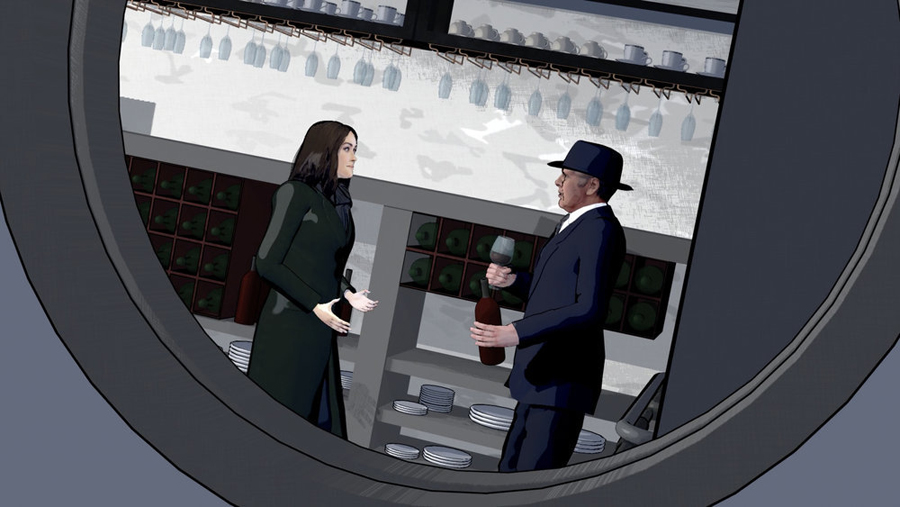How Media Companies Prevailed Amid COVID-19
Remote work solutions helped programmers keep the content pipeline filled
It’s a new year with a new outlook, but the pandemic has forever changed how businesses will think, prepare and operate for the inevitable future. When the world shut down last March, media and broadcast companies in particular, found themselves at the forefront of this pivotal change as they navigated how to continue delivering and producing content for audiences in a virtual capacity.
Major productions were quickly moved remotely and on-air personalities from both news and sports broadcasts continued working from home as we, the viewers, all watched these unprecedented shifts take place in real-time.
As the world increasingly turned to news for information, pined over the return of live sports and ramped up its consumption of streamed content, broadcast companies leaned heavily on advancements in technology. These included remoting solutions, online editing applications and collaboration tools, to name a few, allowing them to seamlessly deliver under these unprecedented circumstances.
A recent study from Teradici offered insights from nearly 700 information technology decision-makers across global organizations following the first wave of COVID-19, and found that tech and media and entertainment companies expect more than 50% of their teams to continue working from home even after the pandemic is over. Both industries plan to increase their investment in the technology necessary to sustain a remote model by more than 200%.
The Network Pivot
Many big networks found themselves with production projects hanging in the balance. Some companies had only begun their early exploration of solutions that would prepare them for a remote work future, but the crisis accelerated that timeline and applications were quickly deployed to support their new virtual workflows.
For some media companies, like ESPN, the impact was immediately felt across the editing teams. When COVID hit, editors working on the Michael Jordan docuseries The Last Dance were only in the early stages of completion. As they navigated working from home to successfully complete the project on time, they quickly looked at new workflows and tools. ESPN engineering soon found a way for its artists and audio technicians to access their workloads through a virtual desktop in the cloud.
The smarter way to stay on top of broadcasting and cable industry. Sign up below

In the scenario where productions were in the middle of on-set shoots with actors, it becomes more complex to finalize that content. The NBC production team and actors of The Blacklist experienced this very challenge. While they were forced to hold on further in-person production during the mandated stay-at-home period, they came up with a plan to complete the final episodes of the seventh season. In only five weeks, NBC teamed up with Proof animation, where its artists created comic-book-like scenes that would combine with those live-action shots to fill in the final pieces of the show. With technology that compresses and encrypts data, sending it to a user’s end-point device, animators working with NBC’s editing team were able to collaborate on this graphic intensive content to complete the project.
For other networks, it was more about the ability to continue their creative output without major interruption. For example, A+E Networks U.K. relied on editing solutions from 7FiveFive to help scale its capacity for remote editing. This allowed its artists to continue their work in a secure and compliant environment while working from a remote location.
And following the final episode of Picard season one, the CBS All Access team had to find a way to continue creating season two as they were forced to quarantine. In less than a week, they discovered and deployed remoting technology to enable the team of artists to quickly and securely log on to virtual machines from anywhere and continue to create future seasons of the new Star Trek spinoff.
Remote Sports for the Win
After sports were put on hold early on, collegiate and professional leagues went into deep discussions about how to return safely. As they considered the details of getting teams back on the field and courts, major production teams were presented with an added technical challenge: bringing live sports production to viewers and airing the highly anticipated NFL draft.
With control rooms shut down following stay-at-home mandates last April, NFL Media quickly shifted gears to rethink its approach to its post-production process. Specifically, NFL Network was able to produce content using virtual software from BeBop Technology and AWS cloud computing services. This solution allowed the network to continue producing recorded editions of NFL Path to the Draft and the NFL Mock Draft early on, and also deliver the first-ever live remote NFL Draft, where both players, coaches and the commissioner engaged virtually versus the traditional live, on-stage and in-person format.
Companies like Fox Sports have been flexing their remote editing muscles when they used PCoIP (personal computer over internet protocol) Zero Clients during the FIFA Women's World Cup 2019. During the pandemic, this approach was taken a step further, as technicians couldn’t sit in the traditional on-site production trucks. The team at Fox Sports hit a home run in delivering the 2020 World Series by scaling its remote editing capabilities using technology to virtually edit the broadcast content from home.
The pandemic unfortunately isn’t going away soon. While media and entertainment and broadcast companies felt its jarring impact in real time, these companies prevailed in innovating their remote-first approach to continue bringing information and much-needed entertainment to viewers worldwide.
David Smith is the CEO of Teradici, a creator of personal computer over internet protocol technology and cloud access software.

